Hyacinth
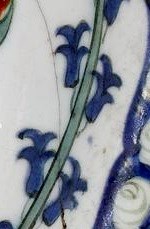
Key in a search term below to search our website.
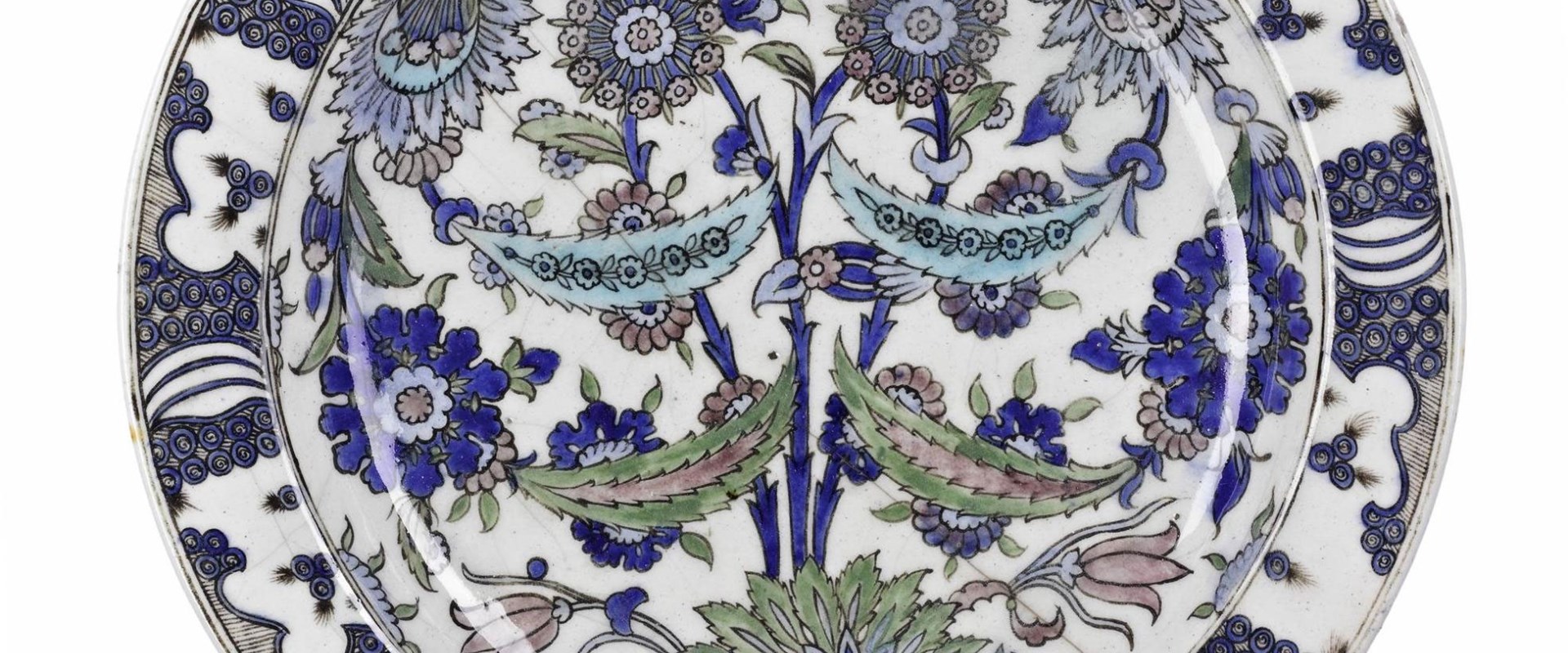
This underglaze painted pottery dish was made in about 1897 in Iran. It contains a floral design found in Iznik pottery of the 16th century. Iznik was a large pottery centre in Ottoman Turkey famous for its ceramics and tiles. The dish is an interesting example of cross-cultural exchange.
Date
c.1897
Made in
Probably Isfahan, Iran
Made from
Ceramic body, transparent colourless glaze, and underglaze colours
Dimensions
Height 65mm, diameter 352mm
Museum reference
On display
Art of Ceramics, Level 3, National Museum of Scotland
Did you know?
The work of the famous 19th century potter and designer William de Morgan was inspired by Iznik ceramics.
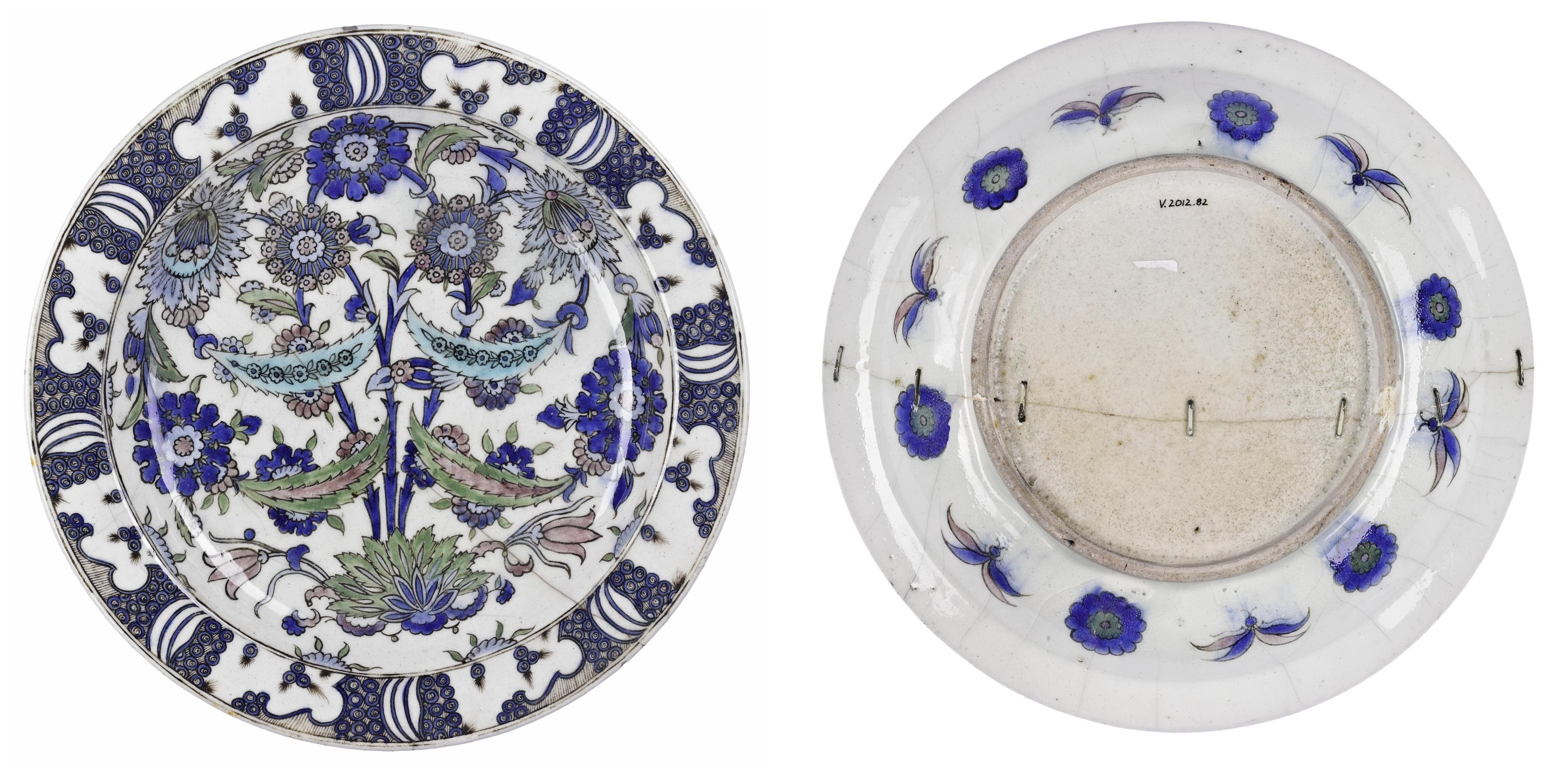
Above: Iznik-style dish made c.1897 and acquired in 2012. The dish has a symmetrical design of rosettes and lotus flowers, with a wave and rock design on the rim. The alternating rosettes and leaf tufts on the back are a common feature of Iznik ceramics.
From the early days of production in the 15th century, pottery made in the town of Iznik, in modern day Turkey, has excited great admiration in the West. One of the most popular and recognisable motifs of Iznik designs are elegant sprays of flowers springing from a leafy tuft. They include tulips, hyacinths, and roses. You can see these motifs on the Iznik dish below, which is currently on display in the Window on the World gallery.
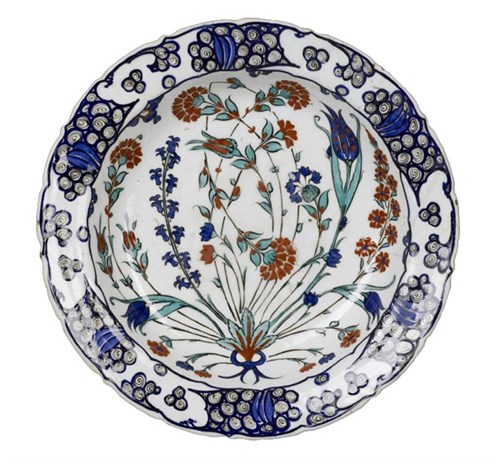
Above: This polychrome underglaze painted dish was made in Iznik sometime between 1550-1600. It shows a pattern in the so-called ‘Quatre Fleurs’ style which is characterised by its naturalistic approach to flowers.

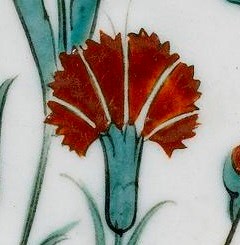
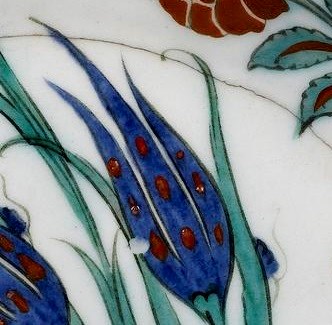
In 1897 the London firm Wright and Hansford, merchants of Chinese and Japanese antiquities, commissioned a pottery workshop in the town of Isfahan, in central Iran, to produce a large number of dishes with Iznik design.
For their commission Wright and Hansford had taken coloured drawings of two Iznik dishes that were displayed at the Victoria and Albert Museum at this time, and which are now in the British Museum collection. The potters in Isfahan used the drawings to reproduce the original Iznik plates in every detail.
Wright and Hansford offered the reproductions to the Victoria and Albert Museum which bought thirty pieces for their own collection and for distribution to Schools of Art where they were used as cheap models to train students.
One example of each design of the commissioned reproductions were also bought in 1899 by the Royal Scottish Museum in Edinburgh, today National Museums Scotland.
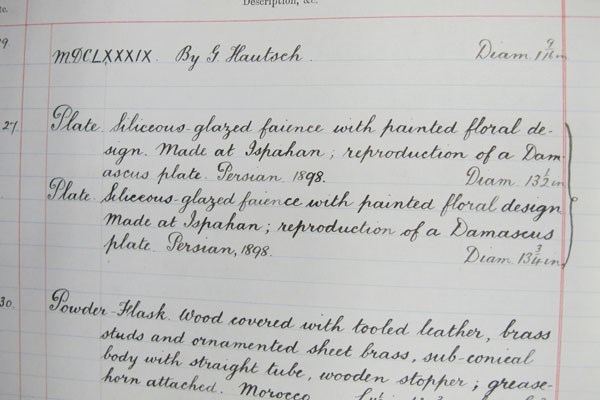
Above: Detail of 'The Royal Museum Register of Specimens' recording the acquisition of the two dishes in March 1899.
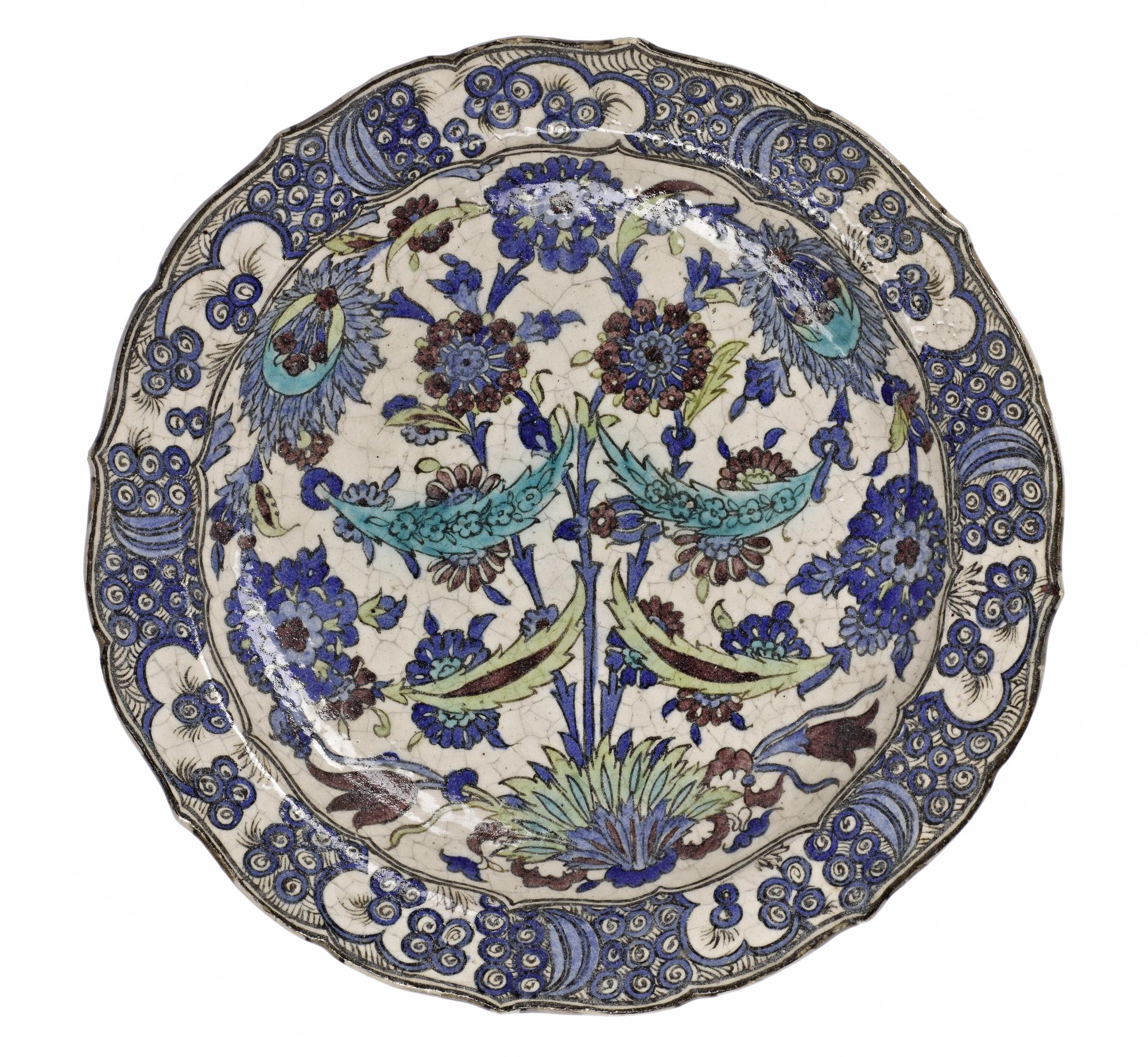
Above: The second dish the museum acquired in 1899.
The newly acquired dish shows a close resemblance to one of the reproduced designs. The Iranian potters must have continued to use this pattern to make dishes for their own customers. However, they did not precisely follow the model, but instead made it an expression of their own artistic taste. They did this by using a different range of colours and changing details of the design. For example, they added a border of half rosettes and leaves along the inner rim.
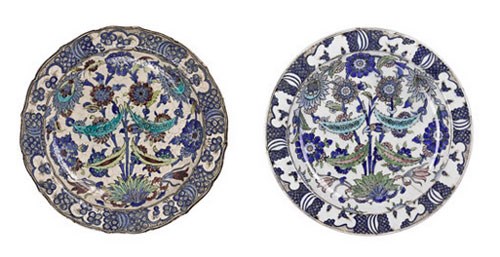
Above: On the left, the reproduction commissioned by Wright and Hansford in 1897; on the right, the Iranian potters' adaptation characterised by a more independent treatment of the design.